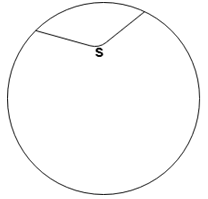This set of Surveying Multiple Choice Questions & Answers (MCQs) focuses on “Field Astronomy – Astronomical Triangle”.
1. Which among the following is used in the formation of the astronomical triangle?
a) Zenith
b) Meridian
c) Horizon
d) Azimuth
View Answer
Explanation: An astronomical triangle can be formed by zenith, combining the pole joints, and a star with reference to circles. By doing this, there might be chance of obtaining a relation between the zenith and the pole joints.
2. When the greatest distance is to the east of the meridian then the elongation is said to be____________
a) Azimuthal elongation
b) Meridian elongation
c) Western elongation
d) Eastern elongation
View Answer
Explanation: In general, a star can be said to be in elongation when its greatest distance is at east or west of the meridian. Eastern elongation can be said only when the greatest distance is at the east of the meridian, which determines the position of azimuth.
3. Which of the following cases determine that the astronomical triangle is right angled?
a) Star at horizon
b) Star at prime vertical
c) Star at culmination
d) Star at elongation
View Answer
Explanation: When the star is positioned at the prime vertical, it is having a chance of attaining a right angled astronomical triangle. By joining the prime vertical and the meridian, declination of the circle can be found out.
4. Napier’s rule is used for the calculation of___________
a) Latitude
b) Declination
c) Hour angle
d) Horizon
View Answer
Explanation: Napier’s rule is generally used in case of field astronomy, which involves in the calculation of altitude and hour angle. These can be calculated by the usage of declination and latitude which are available when the astronomical triangle is right angled.
5. If the star is at horizon which of the following will be equal to zero?
a) Prime vertical
b) Altitude
c) Declination of circle
d) Meridian
View Answer
Explanation: If at all the star is at horizon, it makes the altitude zero and by that influence zenith distance will be equal to 900. By this condition, the value of azimuth and hour angle can be calculated using the value of α = 0.
6. A star crosses a meridian only once in its revolution.
a) False
b) True
View Answer
Explanation: When the star is at culmination or at the state of transition, it will be able to cross the observer’s meridian. It makes it obvious that the star crosses a meridian twice during its period of revolution.
7. Which of the following is obtained from astronomical triangle?
a) Relation between cylindrical co-ordinates
b) Relation between rectangular co-ordinates
c) Relation between geometrical co-ordinates
d) Relation between spherical co-ordinates
View Answer
Explanation: Astronomical triangle involves the usage of spherical co-ordinates. By using the triangle, we are able to derive a relation for the spherical co-ordinates by using certain cases which provide different outputs based on the placement of the star.
8. Which of the following cases is not related to astronomical triangle?
a) Star at culmination
b) Star at elongation
c) Star at vertical
d) Star at prime vertical
View Answer
Explanation: An astronomical triangle is obtained by joining the poles, zenith, and a star which is at an equidistant position. It involves certain cases, which are applied based on the position of the star. They include star at elongation, at culmination, at prime vertical and at horizon.
9. The stars which always move above the horizon are called as__________
a) Circumpolar star
b) Prime star
c) Horizon star
d) Culmination star
View Answer
Explanation: A circumpolar star is the one which will move above the horizon, which doesn’t set. It is useful for the observer in such a way that the observer can use it for describing a circle.
10. The culmination of the star depends upon which of the following factors?
a) Zenith
b) Altitude
c) Meridian
d) Horizon
View Answer
Explanation: A star is said to be culminative when it is crosses the observer’s meridian. There is a possibility for the formation of two culminatives one is lower culminative and upper culminate. It depends on the altitude at which the star is placed.
11. If the star is at elongation, find the altitude of the celestial body having declination and latitude as 24˚56ꞌ and 21˚43ꞌ.
a) 16˚16ꞌ
b) 61˚61ꞌ
c) 16˚16ꞌ
d) 61˚16ꞌ
View Answer
Explanation: The altitude of the celestial body can be determined by using the formula,
Sin α = sin θ * cosec δ. Where θ = latitude of the observer and δ = declination of the celestial body. On substitution, we get
Sin α = sin 21˚43ꞌ * cosec 24˚56ꞌ
Sin α = 0.87
α = 61˚16ꞌ.
12. The point in the figure indicates which among the following?

a) Circumpolar star
b) Circum centre star
c) Polar star
d) Circum star
View Answer
Explanation: Circumpolar stars are located above the horizon which cannot be set. It can appear to the observer to describe a circle above the pole. It has a different path which is located at the poles of the sphere.
Sanfoundry Global Education & Learning Series – Surveying.
To practice all areas of Surveying, here is complete set of 1000+ Multiple Choice Questions and Answers.
If you find a mistake in question / option / answer, kindly take a screenshot and email to [email protected]
- Check Civil Engineering Books
- Practice Civil Engineering MCQs
- Check Surveying Books
- Apply for Civil Engineering Internship
